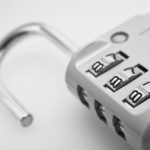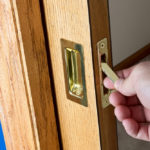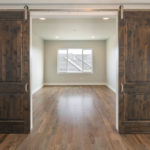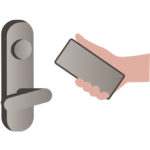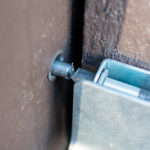French doors always look the part.
Given their open nature, they allow for natural light to shine through into your home. Whether you prefer a professional look or shabby chic — French doors always make your house look upgraded.
However, given their vastly open nature, they’re a big security concern.
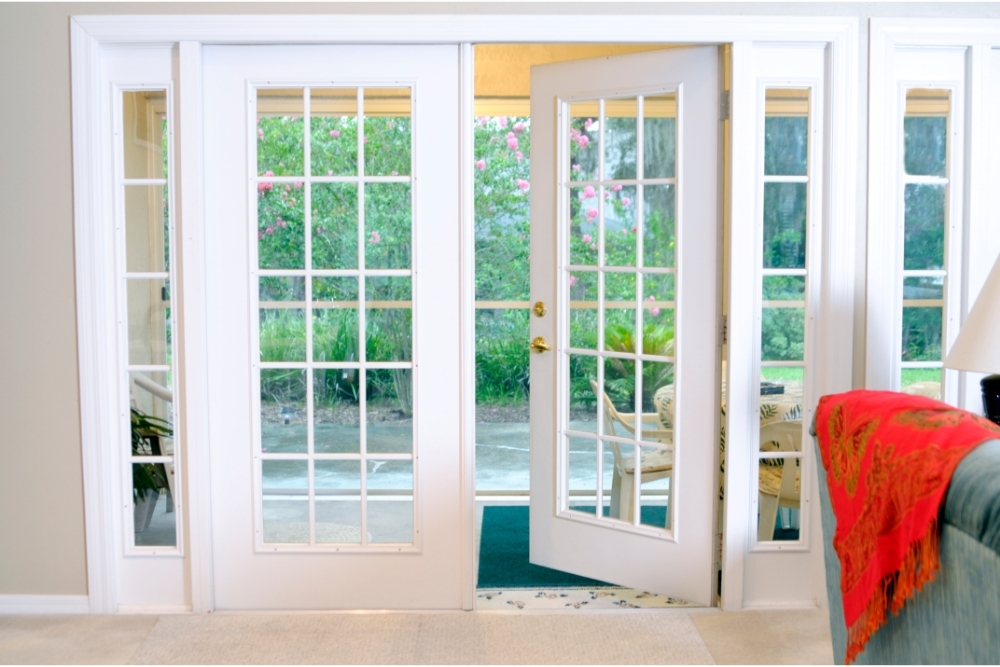
Firstly, anyone can see into your home, and assess your valuables. Luckily for you, we have plenty of articles on how to protect your whole home, so be sure to check them out. Also, consider getting some blinds, just for that extra peace of mind at nighttime.
The real big concern is how easy French doors are to break into — if you don’t install the right locks, that is.
A huge part of installing security features in your home is making sure you have the best possible locks for your protection. And let’s face it, French doors (on the surface) are safety hazards.
We have some great tips on how to lock your French doors so that you have the best security for your home.
What Are French Doors?
If you’re not sure what French doors are, they’re a pair of doors that meet in the middle, with glass panes. This glass comprises most of the door, which allows for lots of natural light to shine through the room. The edges of the door are similar to any other standard door, allowing for hinges and locks to be used.
Generally, one leaf is referred to as the ‘passive door’. The other leaf is referred to as the ‘active door’. The active door is the main door, the one that is regularly used and opened. The passive door is often shut, unless someone is hosting, or wants extra light and ventilation.
Most Common Way To Lock French Doors
Now, as we said — French doors meet in the middle. The passive side of the door is secured into the top of the door frame, and the bottom.
Flush bolts are usually installed at the edge of the door. Everyone knows that a flush bolt isn’t enough to secure your door.
So to double lock it, a deadbolt is used. Here, the active door is secured by locking it into the passive door. Very simple. It’s the most common method of locking French doors, and it is relativity easy.
The Problem With This Method
The problem here is that the passive door always has to be shut. You cannot forget to lock it. Otherwise, it’s incredibly easy to break into. If the passive door is not secured into the door frame, both doors can easily be pushed open. The deadbolt is useless in this situation, as it will just slide out.
So, you’re probably thinking, “Alright. I’ll just always keep the passive door shut. No biggie. I’ve got a good memory.”
And, well, there is a biggie. It’s very easy to break into a passive door. In fact, you can do it with a screwdriver and even a coat hanger. Really. Google is full of helpful suggestions for criminals wanting to break into French doors.
So, what else can we do, to make sure your home is secure?
Secure Ways To Lock French Doors
Alright. There are a good few options to discuss.
Multipoint Lock
One that I always recommend is a Multipoint Lock. It does what it says on the tin — locks in multiple places.
This is crucial, because, in a standard locking system, the main lock is in the center, with just a deadbolt. Even with the flush bolts included, the top and the bottom of the door still don’t have fully integrated locks. And, if your door doesn’t have fully integrated locks, it’s easier to break in.
So, by using a multipoint lock, you’re locking the door in multiple places, which creates a tighter seal from the top of the door to the bottom — making it more difficult for a criminal to break in.
Now, a multipoint lock is going to secure the top of the door, the bottom of the door, and further secures the midpoint. And, that’s just your standard 3 point lock, you can buy 5 point locks for even more security.
Patlock
A security system that we have been loving is the Patlock.
It’s a take on the typical padlock, but it’s designed specifically for patio and French doors.
Although I by no means recommend this as a first step, it should be an added extra — it’s a really great addition to your security system.
It’s super simple for you to fit, and simple for you to take off. It’ll be a system you use when you go out of the house, or you’re sleeping — heck, even if you’re just not using the doors, keep the Patlock on.
The Patlock works by securing the door handles. By securing the handles, it prevents the door mechanism from being opened. Even if someone has broken your locks, they still can’t open the door.
You can check the link, here.
Glass Security
It’s all good and well having secure locks, but you also need to protect the glass — given that your door is mostly glass.
You can purchase glass security film, which will provide greater protection for your glass door. It holds the glass together so that if someone tries to smash through the glass, it’ll be harder to break.
Even if the glass does break, the security film will hold the glass together — still making it harder for the criminal to breakthrough.
It’s a simple DIY trick, but really — it does add extra security that shouldn’t be missed.
Now, ideally — your door should be double-glazed, as this will provide the most protection. Even if your door is double-glazed, you should still install security film, to be extra safe.
If you do not have double glazing, and cannot currently afford it, this is a great temporary alternative for added security.
Summary
Today, we provided you with some great tips on how to keep your French doors safe, and why the standard lock is problematic.
Our best tip would be to purchase a multipoint lock, as we really believe that this product provides the best protection for French doors. The Patlock is also a great extra, and it goes without saying that you should install some glass security film.
We hope you have a happy, and secure day!

